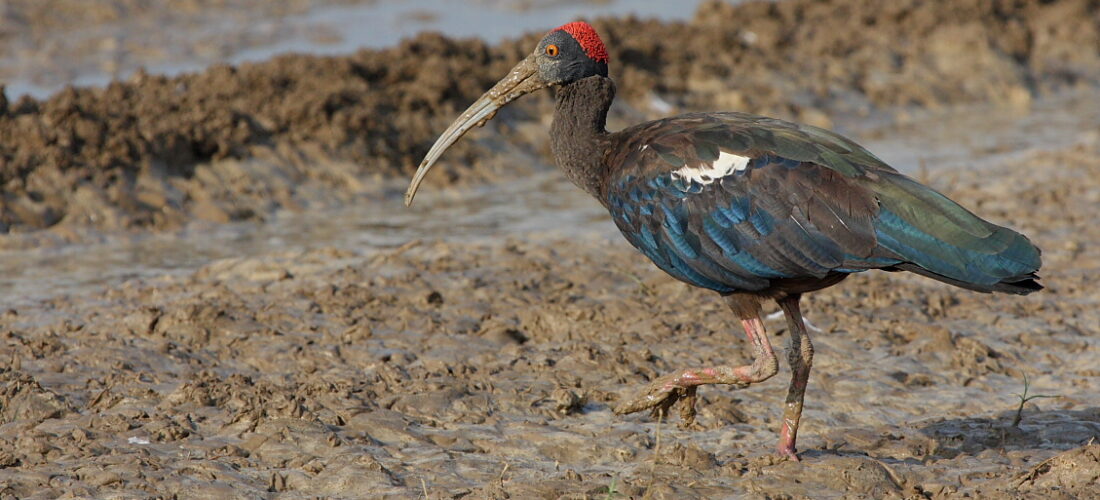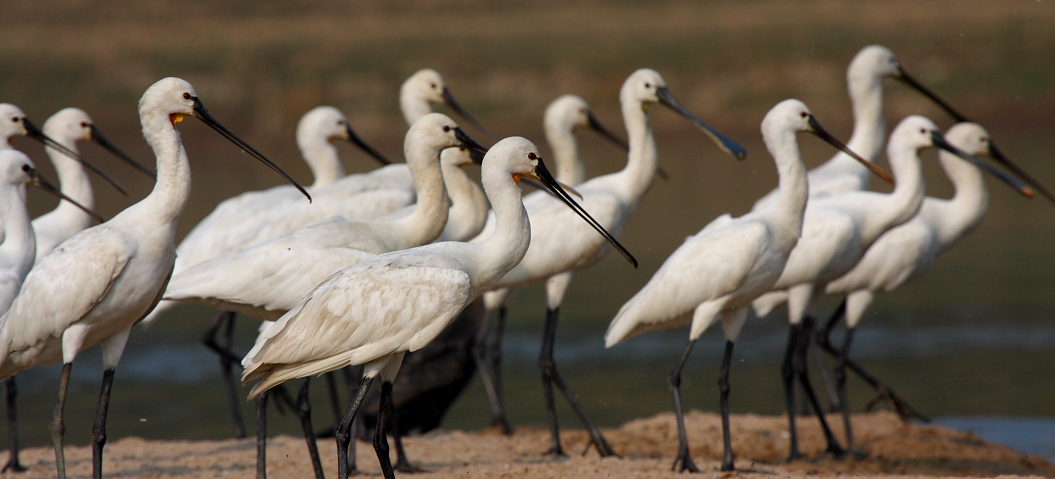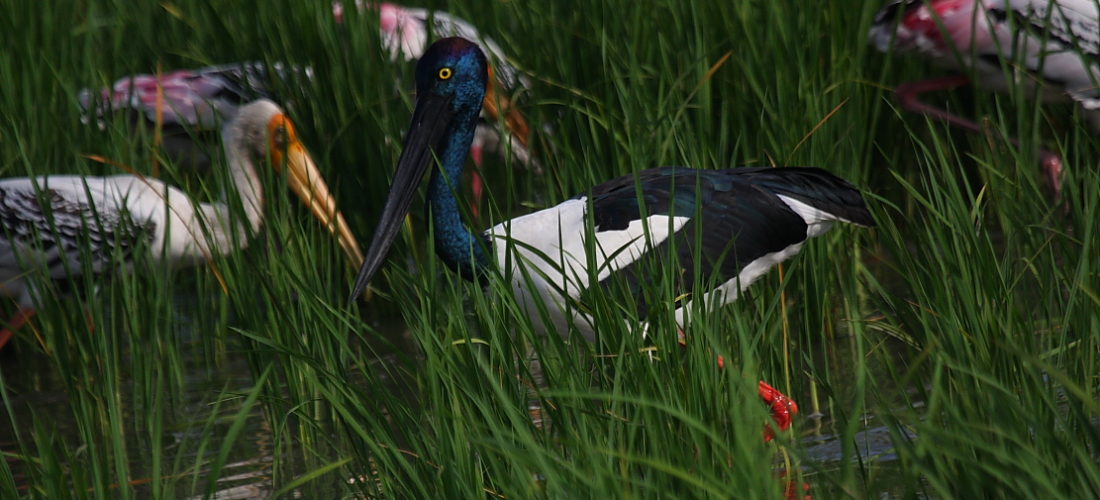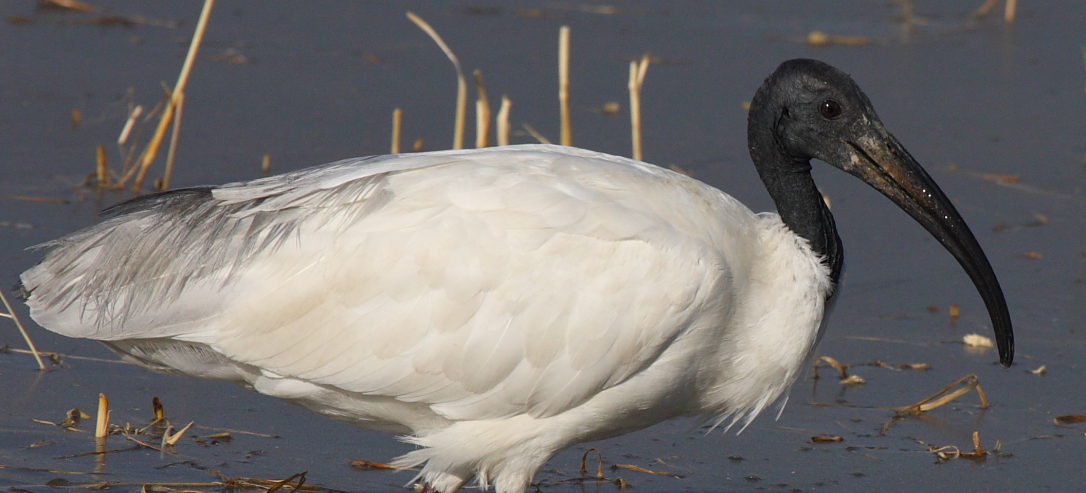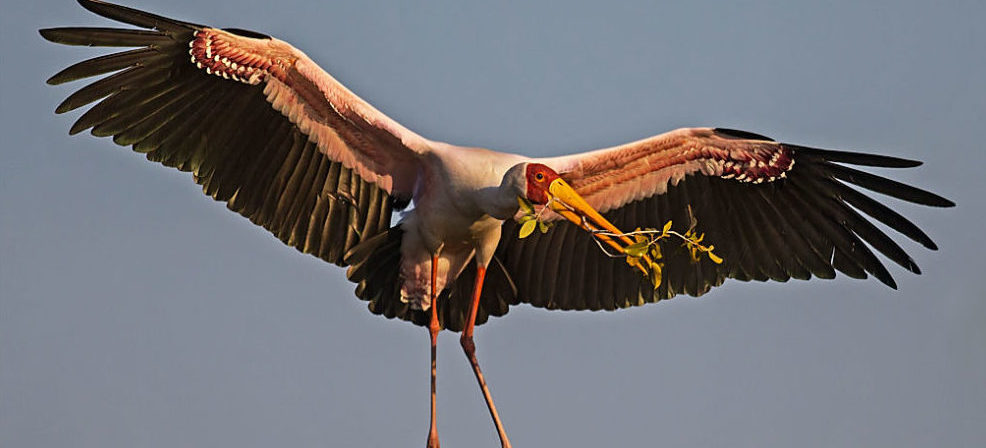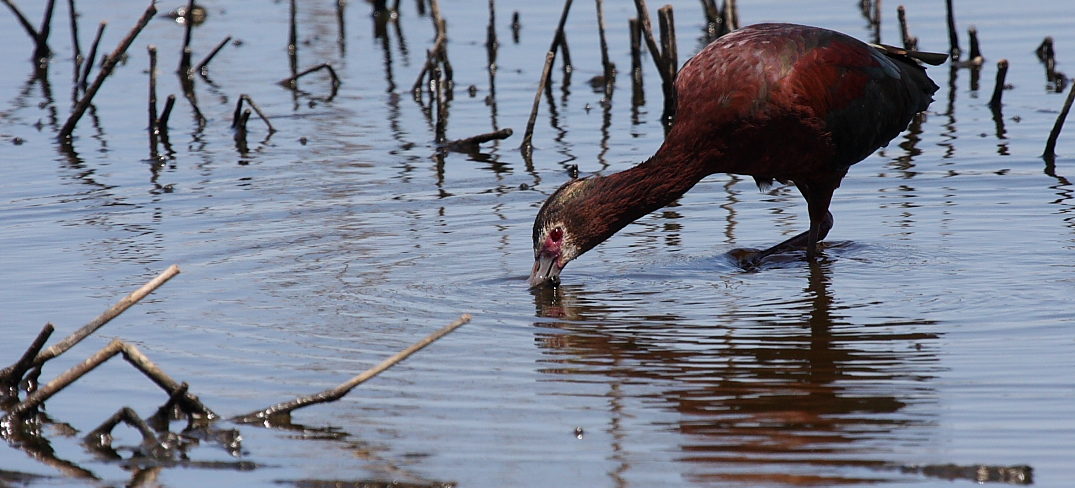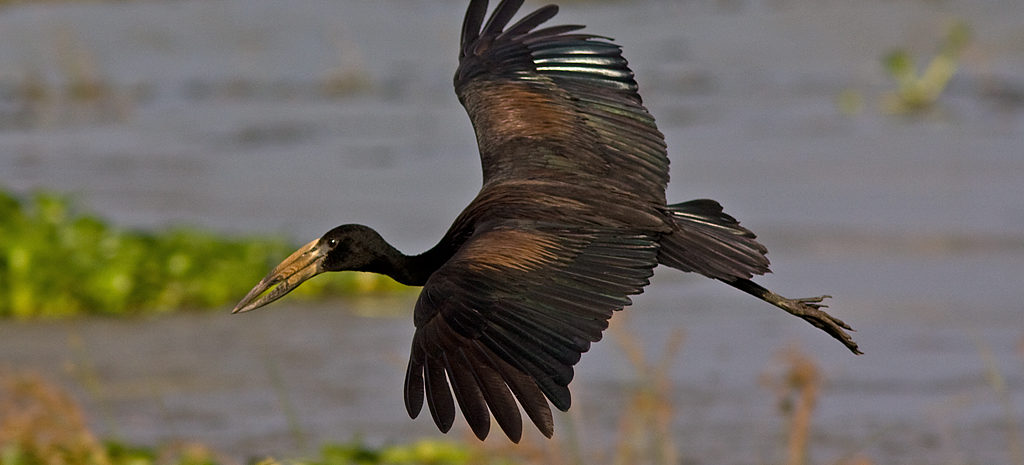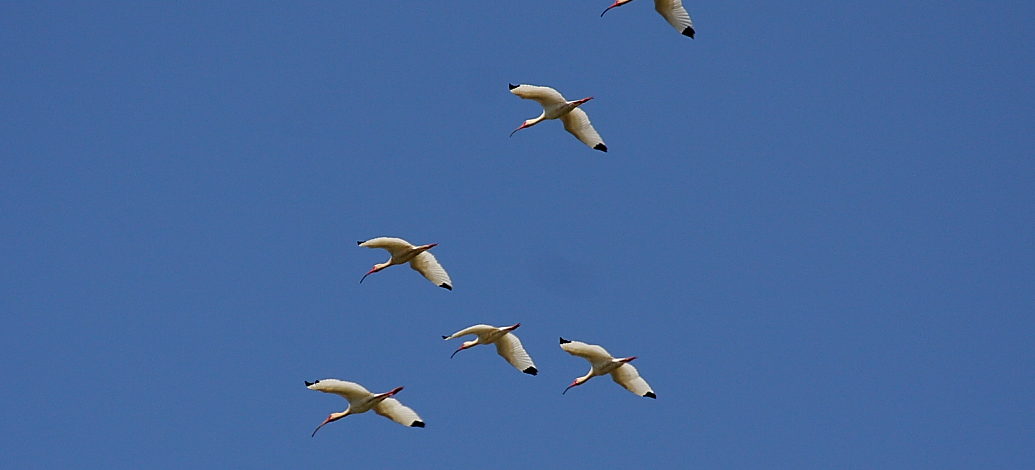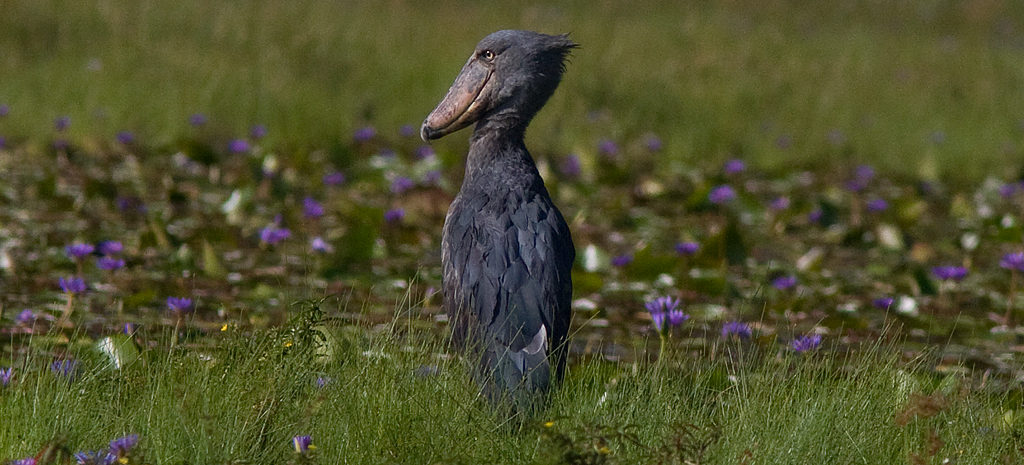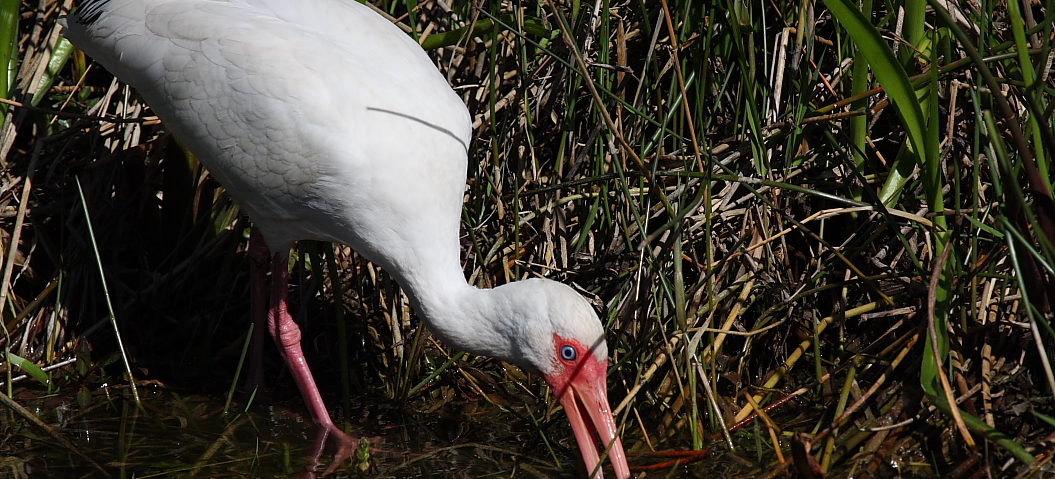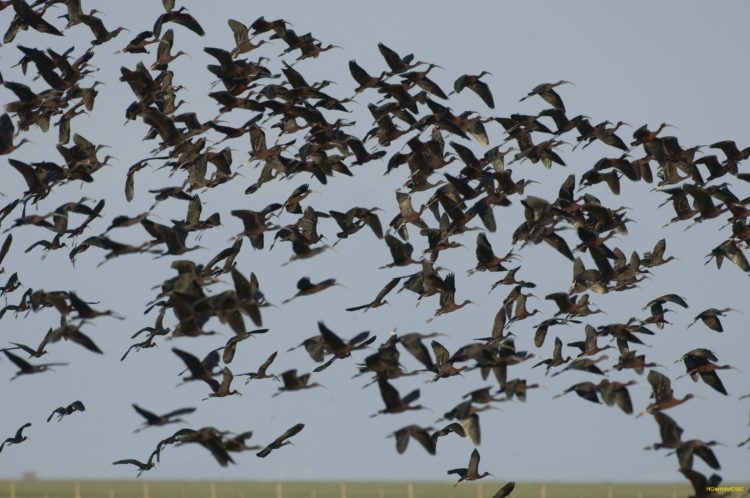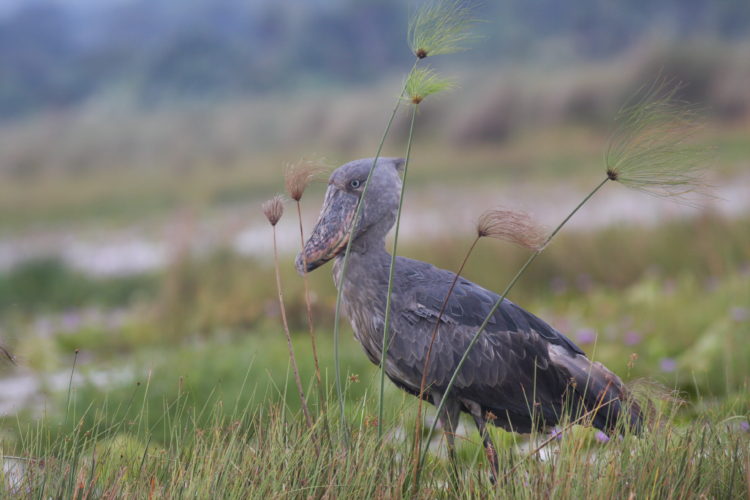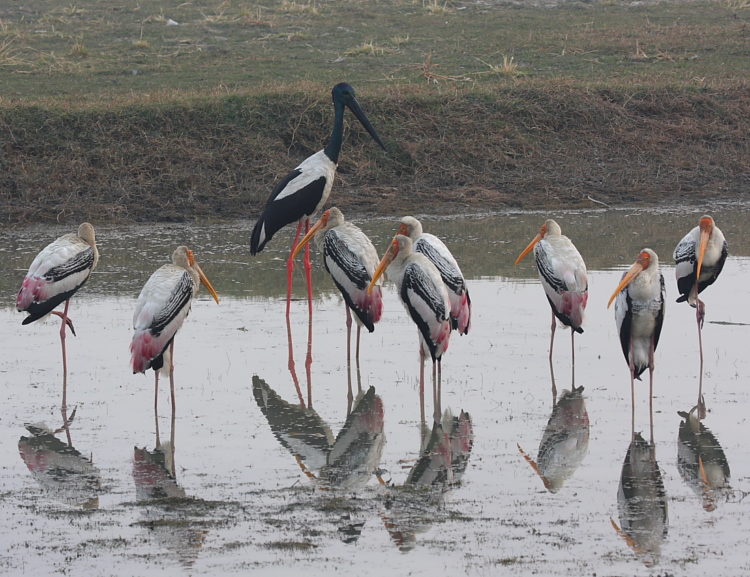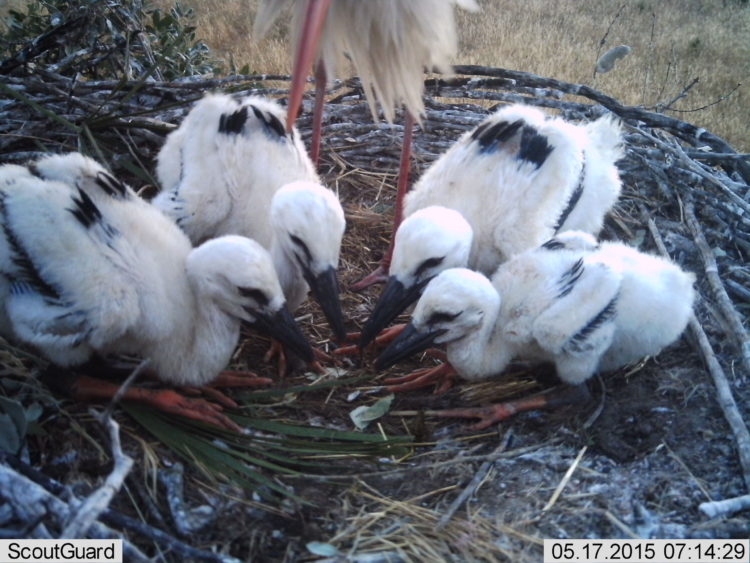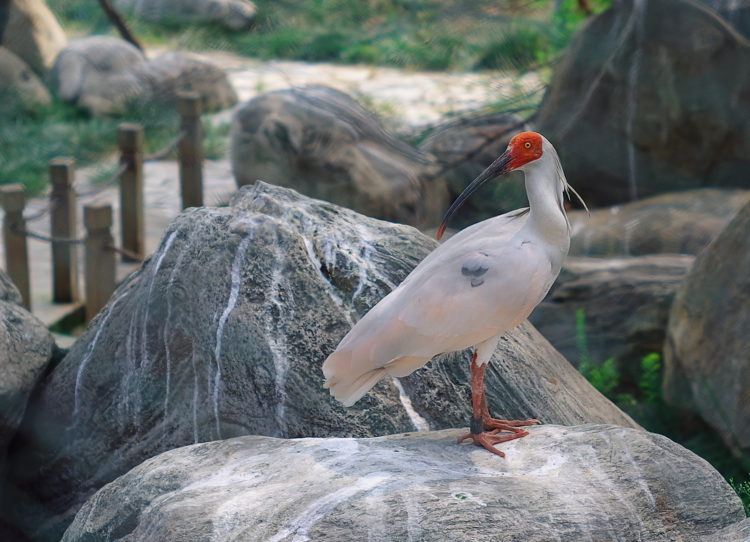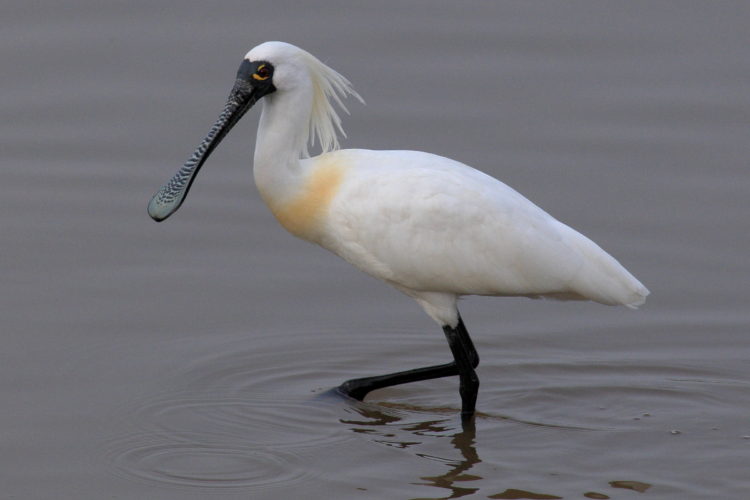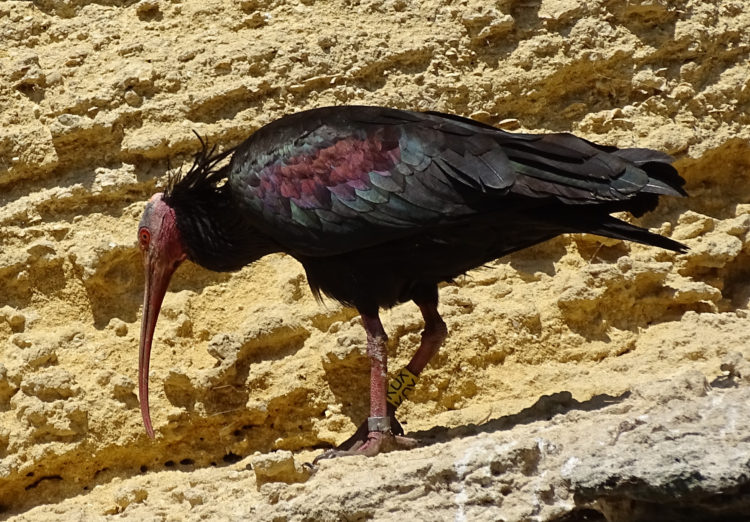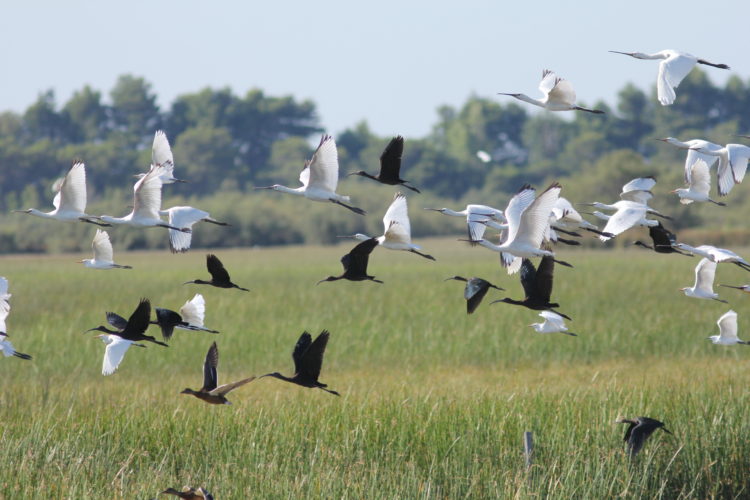The 1st international workshop on Glossy ibis Plegadis falcinellus will be held between the 27th and 29th November 2017 at Doñana, a protected area in Southern Spain, where the species came back to breed in 1996, after many decades that the species was not reproducing in the country. Since then, the population showed a sharp…Continue reading Announcement of the 1st international workshop on Glossy ibis Plegadis falcinellus
Shoebills, a source of Livelihoods in Uganda
Every bird watcher’s trip starts from Mabamba Swamp, one of the few remaining strongholds of the Shoebill Balaeniceps rex in Uganda. The world is estimated to have 5,000-8,000 shoebills remaining with an estimation of only about 150 pairs left in Uganda (IUCNRed List 2016). Mabamba Wetland was designated an Important Bird Area in 2001 and…Continue reading Shoebills, a source of Livelihoods in Uganda
Large waterbirds in south Asia attract two new grants
Research and robust data on waterbird status and requirements are biased to few locations in the world. South Asia is one of the locations with an impressive diversity of large waterbirds, but with sparse information on species and their habitats to inform conservation planning. Many assumptions from south Asia drive species assessments. A prominent assumption…Continue reading Large waterbirds in south Asia attract two new grants
Kushlan Research Award 2017 is to investigate the Glossy ibis
The Kushlan Research Award winner of this year is a proposal promoted by one of our members, Simone Santoro (Universidad Pablo de Olavide, Spain), and Alejandro Centeno-Cuadros (Biotech Business International, Spain). The aim is investigating the glossy ibis (Plegadis falcinellus) gene flow at a worldwide scale by combining nuclear and microsatellite markers. The project has…Continue reading Kushlan Research Award 2017 is to investigate the Glossy ibis
Brooding over White Stork nest behaviours
White Stork adults are also infamous for filial infanticide – the killing of chicks by adults at the nest. Why should this be so?
Touchy-feely Crested Ibis fare better amid visual egrets
Feeding in flocks is hard work. And no one knows this more than ibises. Jostling ibis flocks in marshes are common, and fights often break out as birds try to get at food before their neighbours can. Flock-feeding is not all about competition though – more eyes and ears make for a safer feeding experience.…Continue reading Touchy-feely Crested Ibis fare better amid visual egrets
Black-faced Spoonbills increase!!
The only endangered species of spoonbills is the Black-faced Spoonbill, and this species also has the most restricted distribution range of any spoonbill species. In the 1950s the population of this species was reduced to 300 in the wild. A large number of wild eggs were harvested immediately after the Korean war, which was likely…Continue reading Black-faced Spoonbills increase!!
Spoonbill work featured in the Mar 2017 issue of “Waterbirds”
Two new papers in the recently-completed March 2017 issue of the journal Waterbirds explore the biology and behaviour of spoonbills. Csaba Pigniczki documents a fascinating feeding behaviour of the Eurasian Spoonbill that was presented with the problem of a large frog that did not want to be swallowed. Csaba writes of how observations showed that…Continue reading Spoonbill work featured in the Mar 2017 issue of “Waterbirds”
Dark-coloured Ibises cannot keep a cool head! Or can they?
Many Ibis species have bare heads. While it is commonly thought that this somehow helps them with keeping cool, studies to demonstrate this have been absent. Until now. Ismael Galván at the Department of Evolutionary Ecology, Doñana Biological Station in Spain, and his colleagues, decided to put this hypothesis to test. For this, they used…Continue reading Dark-coloured Ibises cannot keep a cool head! Or can they?
The ESIEG
Eurasian Spoonbills are among the most easily identifiable bird species in the world. Their unique, spatulate bill and their sweeping method of foraging is well known to many, expert and novice alike. An equally unique group of people have come together to keep an eye on the well-being of the Eurasian Spoonbill – a widely…Continue reading The ESIEG


